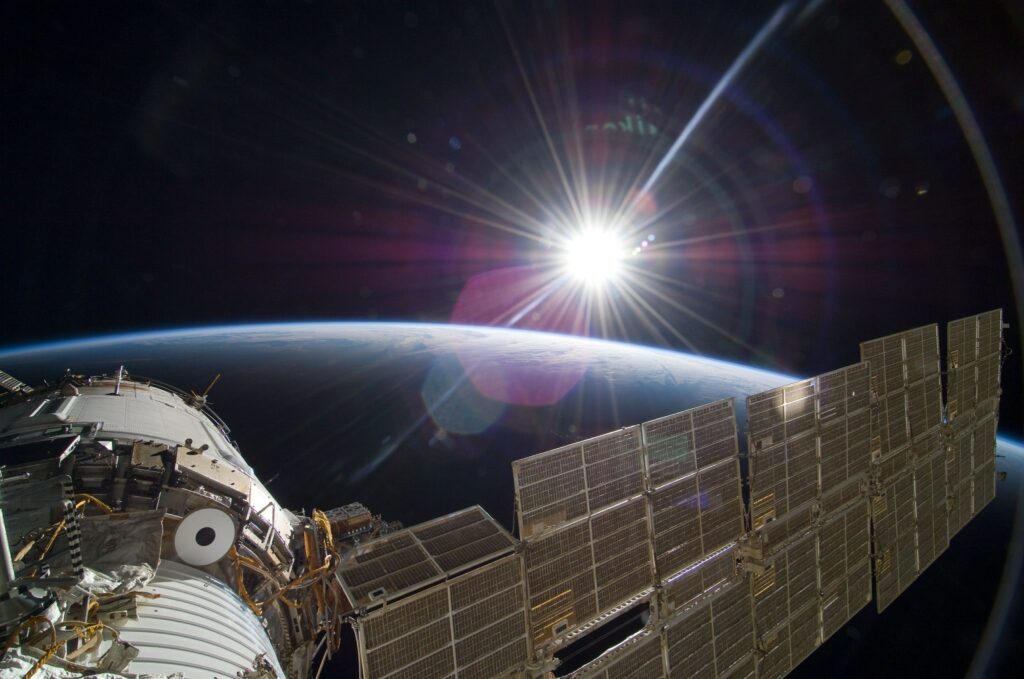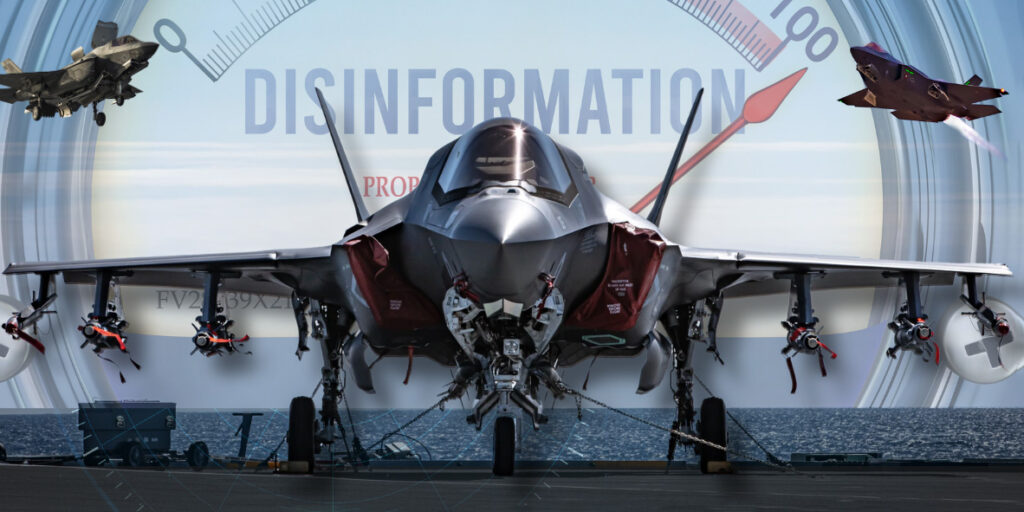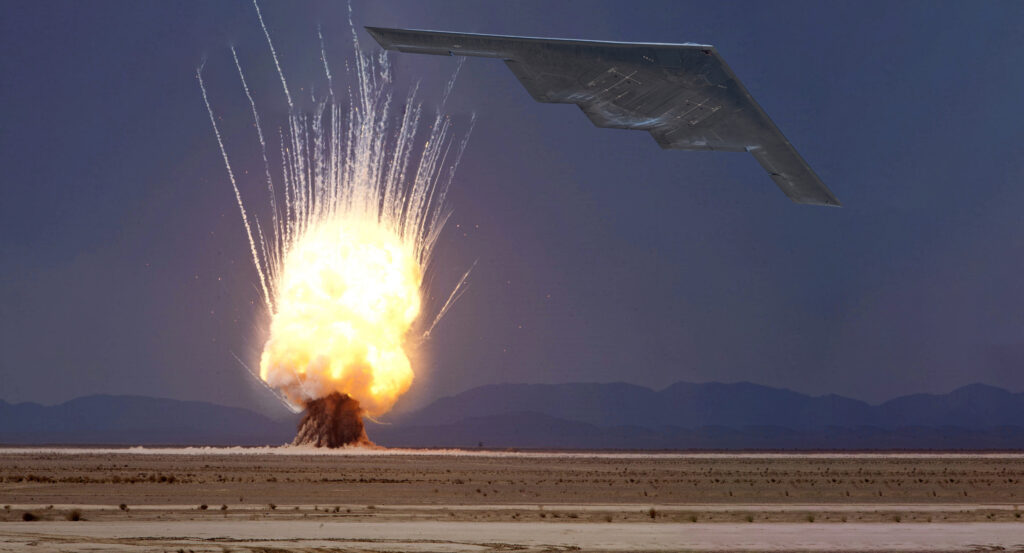Russia’s space weapon test and the militarization of space
- By Alex Hollings
Share This Article

On Thursday, the United States Space Force issued a release accusing Russia of testing an anti-satellite space weapon. This sort of threat to America’s orbital infrastructure is precisely why the Space Force was established: to monitor and mitigate threats posed to America’s essential satellite infrastructure.
According to the report, Space Force assets tracked the movement of a Russian satellite they refer to as Cosmos 2543 as it closed with another Russian satellite (apparently a test target) and deployed some sort of projectile. This satellite, which appears to actually be a semi-autonomous anti-satellite weapon, can be tracked by civilian enthusiasts using Satellite Catalog Number 45915 on Space-Track.org.
“The Russian satellite system used to conduct this on-orbit weapons test is the same satellite system that we raised concerns about earlier this year, when Russia maneuvered near a U.S. government satellite,” said Gen. John W. “Jay” Raymond, Commander of U.S. Space Command and U.S. Space Force Chief of Space Operations.
“This is further evidence of Russia’s continuing efforts to develop and test space-based systems, and consistent with the Kremlin’s published military doctrine to employ weapons that hold U.S. and allied space assets at risk.”
This is far from the first time the Russian military has been accused of employing or testing space weapons. In February of this year, America’s Space Force identified a Russian satellite behaving abnormally, apparently following a U.S. satellite through its orbit. The Russian platform in question had been launched the previous November.
“Last November the Russian government launched a satellite that subsequently released a second satellite,” Gen. John Raymond said in February.
“These satellites have been actively maneuvering near a U.S. government satellite and behaving similar to another set of satellites that Russia deployed in 2017, and which the Russian government characterized as ‘inspector satellites.’ “
Something to potentially watch: Cosmos 2542, a Russian inspection satellite, has recently synchronized its orbit with USA 245, an NRO KH11.
A thread: pic.twitter.com/LqvYiIYBMd— Michael Thompson (@M_R_Thomp) January 30, 2020
The United States isn’t the only nation to accuse Russia of bad behavior in orbit. In 2018, French Defence Minister Florence Parly accused the aggressive nation of attempting to intercept transmissions from a Franco-Italian military communications satellite.
“Trying to listen to one’s neighbor is not only unfriendly. It’s called an act of espionage,” Parly said in a 2018 speech.
“It got close. A bit too close. So close that one really could believe that it was trying to capture our communications.”
Space weapons, particularly anti-satellite weapons, do not need to be particularly dynamic to be extremely effective. Many of the satellites America relies on for everything from navigation to communications to nuclear missile launch warnings are highly vulnerable to enemy interference, largely because these satellites were placed in orbit before other nations had the capability to interfere with them.
“We built a glass house before the invention of stones.”
-Former Air Force Secretary Heather Wilson
A space weapon would need only to get close to an enemy satellite and nudge it into a degrading orbit, allowing gravity and the intense heat of reentry to destroy the it. Other methodologies that have been tested to eliminate space junk could be equally as effective, like using an extendable arm to grab a satellite to move it, shooting it with on-board lasers, or even deploying a net to capture it. Simply maintaining a close proximity to a satellite with a platform designed to intercept secure data transfers could also give Russia a highly effective means of stealing important defense information.
In effect, a space weapon doesn’t need to look or seem like a weapon to be devastatingly effective.

Interestingly, despite Russia’s growing reputation for aggressive behavior in orbit, the Russian government has repeatedly accused the United States of “militarizing space” with the establishment of the new Space Force, even going so far as to accuse the U.S. of violating the 1967 Outer Space Treaty, which barred both the placement and use of weapons of mass destruction in orbit and beyond, as well as limiting the use of space as a military theater.
However, in 2015, Russia established the Kosmicheskie Voyska Rossii, roughly translated to Russian Space Forces, operating under Russia’s broader Aerospace Forces. Earlier iterations of Russian military branches dedicated to space date all the way back to 1967, with the establishment of the Troops of Anti-Missile and Anti-Space Defence. In 1982, that military branch was re-organized into the Ministry of Defence Space Units. After the fall of the Soviet Union in 1991, the Armed Forces of the Russian Federation were stood up in 1992, with a new “Space Force” already in operation by August of the year.

Of course, when asked about military operations in space, Russian officials regularly deny any such activity.
“Russia’s position on this question has not changed for decades: We are categorically against the militarization of space.”
Russian Defense Minister Sergei Ivanov
The presence of America’s military in orbit also dates back decades, of course. Near the end of World War II, the United States captured a number of notable Nazi rocket scientists that were brought back to the United States to begin developing ballistic missile technology for the U.S. Army under Project Paperclip. Most notable among these captured scientists was Dr. Wernher von Braun, who would go on to be considered the father of the Saturn V–the rocket that would eventually win the Space Race for the United States by carrying a pair of former military pilots turned astronauts to the moon.

Russia and the United States aren’t even the only nations with space-centric branches of their armed forces. China’s Strategic Support Force integrates space, cyber, and electronic warfare capabilities under a single command. Unlike Russia and the U.S., which operate Roscosmos and NASA respectively as non-military organizations, China’s space program has always been a military enterprise.
To put a blunt end on it, the space around our tiny blue dot has been militarized since the days of Sputnik, making Russia’s accusations about America’s newfound Space Force particularly hypocritical; a point that was not lost to Dr. Christopher Ford, the U.S. Assistant Secretary of State that’s currently performing the duties of the Under Secretary for Arms Control and International Security.
“This event highlights Russia’s hypocritical advocacy of outer space arms control, with which Moscow aims to restrict the capabilities of the United States while clearly having no intention of halting its own counterspace program — both ground-based anti-satellite capabilities and what would appear to be actual in-orbit anti-satellite weaponry,” said Ford.
Ultimately, it doesn’t matter who points the finger at who regarding the militarization of space; that was already done seven decades ago. A more appropriate question today may be who will dominate space moving forward, and Russia’s weapon tests show that they intend to take that place at the podium.
Related Posts
Sandboxx News Merch
-

‘AirPower’ Classic Hoodie
$46.00 – $48.00 Select options This product has multiple variants. The options may be chosen on the product page -

‘Sandboxx News’ Trucker Cap
$27.00 Select options This product has multiple variants. The options may be chosen on the product page -

‘Sandboxx News’ Dad Hat
$27.00 Select options This product has multiple variants. The options may be chosen on the product page

Alex Hollings
Alex Hollings is a writer, dad, and Marine veteran.
Related to: Military Affairs

The A-12 Avenger II would’ve been America’s first real ‘stealth fighter’

Why media coverage of the F-35 repeatedly misses the mark

It took more than stealth to make the F-117 Nighthawk a combat legend

B-2 strikes in Yemen were a 30,000-pound warning to Iran
Sandboxx News
-

‘Sandboxx News’ Trucker Cap
$27.00 Select options This product has multiple variants. The options may be chosen on the product page -

‘AirPower’ Classic Hoodie
$46.00 – $48.00 Select options This product has multiple variants. The options may be chosen on the product page -

‘AirPower’ Golf Rope Hat
$31.00 Select options This product has multiple variants. The options may be chosen on the product page -

‘Sandboxx News’ Dad Hat
$27.00 Select options This product has multiple variants. The options may be chosen on the product page
